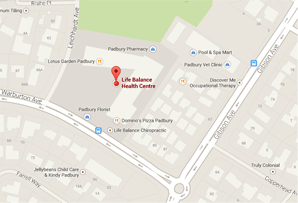NIS and Infertility: A Natural Approach to Enhancing Fertility
- Release an egg from one of her ovaries (ovulation)
- The egg must go through a fallopian tube toward the uterus (womb)
- A man's sperm must fertilise the egg along the way
- The fertilised egg must attach to the inside of the uterus. Infertility can result from problems that interfere with any of these steps.
Is infertility a common problem? According to the National Center for Health Statistics about 12 percent of women (7.3 million) in the United States aged 15-44 had difficulty get- ting pregnant or carrying a baby to term in 2002.
What causes infertility in women?
Problems with ovulation account for most cases. Without ovulation, there are no eggs to be fertilised. Some signs that a woman is not ovulating normally include irregular or absent menstrual periods. Less common causes of fertility problems include:
- Blocked fallopian tubes due to pelvic inflammatory dis- ease, endometriosis, or surgery for an ectopic pregnancy, physical problems
- Physical problems with the uterus
- Uterine fibroids
What increases the risk of infertility?
- Commonly: Age, stress, poor diet, intensive sport training, tobacco, being overweight or underweight, sexually transmitted diseases.
Can the male have infertile problems?
Frequently this is viewed as a secondary rather than an initial source to be investigated. There are 3 areas of concern:
- Problems making or producing too few sperm
- Problems with the sperm's ability to reach & fertilise egg
- Abnormal sperm shape or structure prevent it from moving correctly. Sometimes a man is born with the problems that affect his sperm. Other times problems start later in life through illness or injury. For example, cystic fibrosis often causes infertility in men.
What increases infertility risk in the male?
The number and quality of the sperm can be affected by overall health and lifestyle. Some things that may reduce sperm number and/or quality include: alcohol, drugs, environmental toxins in- cluding pesticides and lead, smoking cigarettes, radiation & chemotherapy treatment, and age.
Article of interest for practitioners
Looking briefly at the female hormones:
The number of eggs that a woman can produce inher lifetime isdetermined before birth. During her embryonic life, millions of special germ cells are produced in the ovaries. Many of these degenerate, and the rest are ready to develop into mature eggs when the time comes.
Three months before ovulation, up to 300 eggs are recruited for growth and development. This process, in which an egg (oocyte) ripens & is liberated for fertilisation, is controlled by an elaborate system involv- ing the gonadotropins.
The cycle is controlled by the following hormones: • Folliclestimulatinghormone(FSH)
About two weeks before ovulation, the secretion of FSH rises, stimulating the growth and development of the 'dominant' follicle that grows and matures faster than the others that then degenerate.
- Oestrogen - Secreted by the growing follicles causing the lining of the endometrium to thicken and promotes changes in the cervical mucus enabling optimal penetration of the sperm. About 32 hours before ovulation, oestrogen se- cretion peaks causing a surge in LH.
- Luteinizinghormone(LH) - Triggers the release of the mature egg from the dominant follicle. What remains of the follicle is subsequently transformed into the corpus luteum.
- Progesterone - Secreted from the corpus luteum to prepare the endometrium for implantation.
What is the role of NIS in all of this? A vital one!
You have access to a system that will ensure that all glands and especially the hormonal "reservoirs" are free of any infective antigens that would hinder function, such as; Pituitary/ Adrenal Cortex/ Ovaries/ Testes/ Liver.
By pairing different glandular combinations we have the ability to assess any breakdown in 'dialogue' between those glands.
The excitement of a successful fertilisation after years of failure can cause the odd faux pas–such as the delighted newly pregnant patient introducing her friend to the practitioner & saying "this is the Dr who got me pregnant !!"
